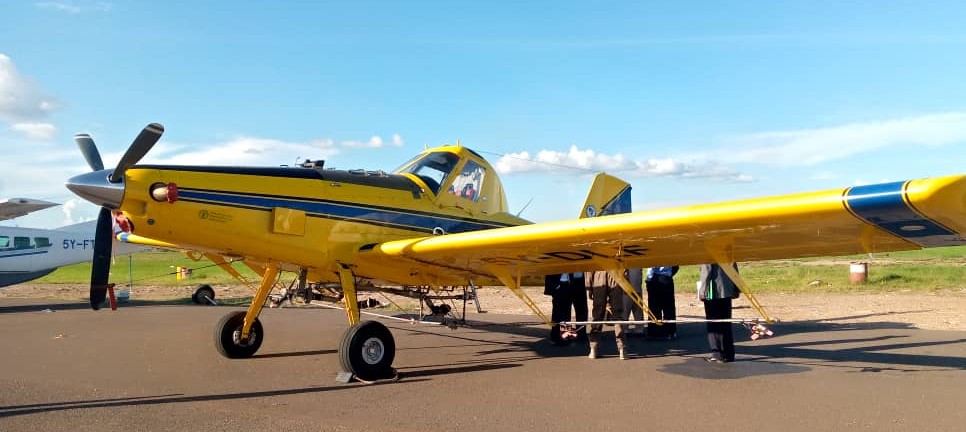South Sudan’s Ministry of Agriculture, in partnership with FAO, on Monday flagged off a spray aircraft to counter Quelea Birds in Upper Nile State and the Ruweng Administrative Area (RAA).
The aircraft, secured by Desert Locust Control Organization for Eastern Africa (DLCO-EA) in partnership with FAO, arrived in Juba on Monday evening.
Addressing journalists at the Juba International Airport on Monday, Josephine Lagu, the Minister for Agriculture and Food Security, said the aircraft would help farmers’ combat the infestation.
“This aircraft has been brought in specifically by DLCO, UN FAO and us, the Ministry of Agriculture and Food Security, to carry out the spraying on Quelea Birds in Upper Nile and Ruweng Administrative Areas, as well as parts in Unity States,” said Lagu.
She disclosed that the spraying to be conducted for one month would start on October 29.
“And the spraying of these Quelea birds will start on the 29th of October and it will be carried out for a period of one month. The spraying of the Quelea birds will control damage and ensure food security continues in the affected areas so that our people do not suffer loss of their crops.”
FAO Country Representative Meshak Malo revealed that the aircraft was purchased to support the East African member states to control the desert locusts and birds.
The Director of DLCO-EA, Mwesigwa Moses Rwaheru, disclosed that the Quelea Birds, which fly in millions, could destroy thousands of tons of food per day.
“You’ll find that one bird destroys over 10grams per day and these birds fly in millions. So in one season, for example, and they target the milky stage of their crop which is around 25 to 30 days,” Rwaheru said.
The birds have reportedly become a major obstacle to crops in the region.
Quelea Birds are small, migratory, sparrow-like natives of sub-Saharan Africa.
They breed in thorn- scrubs but also roost in areas with thick grasses and shrubs.
According to agricultural experts, each pair of Quelea Birds produces two or three young ones, which within the year may wander hundreds of miles in huge numbers that make them destructive to cereals.




